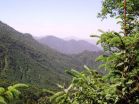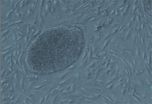(Press-News.org) Researchers at The University of Texas at Dallas and Virginia Tech have created an undersea vehicle inspired by the common jellyfish that runs on renewable energy and could be used in ocean rescue and surveillance missions.
In a study published this week in Smart Materials and Structures, scientists created a robotic jellyfish, dubbed Robojelly, that feeds off hydrogen and oxygen gases found in water.
"We've created an underwater robot that doesn't need batteries or electricity," said Dr. Yonas Tadesse, assistant professor of mechanical engineering at UT Dallas and lead author of the study. "The only waste released as it travels is more water."
Engineers and scientists have increasingly turned to nature for inspiration when creating new technologies. The simple yet powerful movement of the moon jellyfish made it an appealing animal to simulate.
The Robojelly consists of two bell-like structures made of silicone that fold like an umbrella. Connecting the umbrella are muscles that contract to move.
In this study, researchers upgraded the original, battery-powered Robojelly to be self-powered.They did through a combination of high-tech materials including artificial muscles that contract when heated.
These muscles are made of a nickel-titanium alloy wrapped in carbon nanotubes, coated with platinum and housed in a pipe. As the mixture of hydrogen and oxygen encounters the platinum, heat and water vapor are created. That heat causes a contraction that moves the muscles of the device, pumping out the water and starting the cycle again.
"It could stay underwater and refuel itself while it is performing surveillance," Tadesse said.
In addition to military surveillance, Tadesse said, the device could be used to detect pollutants in water.
Tadesse said the next step would be refining the legs of the devices to move independently, allowing the Robojelly to travel in more than one direction.
###Dr. Ray Baughman, the Robert A. Welch Distinguished Chair in Chemistry and director of the Alan G. MacDiarmid NanoTech Institute at UT Dallas, was an author of the study. The research was a collaboration between researchers at the University of Texas at Dallas and Virginia Polytechnic Institute and State University, Virginia Tech, including Dr. Shashank Priya, the study's senior author.
The study was funded by the Office of Naval Research.
Researchers unveil robot jellyfish built on nanotechnology
UT Dallas team collaborates on undersea vehicle powered by hydrogen and oxygen
2012-03-26
ELSE PRESS RELEASES FROM THIS DATE:
Possible causes of sudden onset OCD in kids broadened
2012-03-26
Criteria for a broadened syndrome of acute onset obsessive compulsive disorder (OCD) have been proposed by a National Institutes of Health scientist and her colleagues. The syndrome, Pediatric Acute-onset Neuropsychiatric Syndrome (PANS), includes children and teens that suddenly develop on-again/off-again OCD symptoms or abnormal eating behaviors, along with other psychiatric symptoms – without any known cause.
PANS expands on Pediatric Autoimmune Neuropsychiatric Disorder Associated with Streptococcus (PANDAS), which is limited to a subset of cases traceable to ...
UN hits water target, but 1.8 billion people still drinking unsafe water, study shows
2012-03-26
Recent widespread news coverage heralded the success of a United Nations' goal of greatly improving access to safe drinking water around the world.
But while major progress has been made, a new study from the University of North Carolina at Chapel Hill indicates that far greater challenges persist than headline statistics suggested.
Earlier this month (March 6), UNICEF and the World Health Organization issued a report stating that the world had met the U.N.'s Millennium Development Goal target of halving the proportion of people without access to safe drinking water, ...
Mountaintop blasting to mine the sky with the Giant Magellan Telescope
2012-03-26
Pasadena, CA--Astronomers have begun to blast 3 million cubic feet of rock from a mountaintop in the Chilean Andes to make room for what will be the world's largest telescope when completed near the end of the decade. The telescope will be located at the Carnegie Institution's Las Campanas Observatory—one of the world's premier astronomical sites, known for its pristine conditions and clear, dark skies. Over the next few months, more than 70 controlled blasts will break up the rock while leaving a solid bedrock foundation for the telescope and its precision scientific instruments.
The ...
Learning best when you rest: Sleeping after processing new info most effective, new study shows
2012-03-26
Nodding off in class may not be such a bad idea after all. New research from the University of Notre Dame shows that going to sleep shortly after learning new material is most beneficial for recall,
Titled "Memory for Semantically Related and Unrelated Declarative Information:
The Benefit of Sleep, the Cost of Wake," the study was published March 22 in PLOS One.
Notre Dame Psychologist Jessica Payne and colleagues studied 207 students who habitually slept for at least six hours per night. Participants were randomly assigned to study declarative, semantically ...
Researchers discover why humans began walking upright
2012-03-26
WASHINGTON—Most of us walk and carry items in our hands every day. These are seemingly simple activities that the majority of us don't question. But an international team of researchers, including Brian Richmond at the George Washington University, have discovered that human bipedalism, or walking upright, may have originated millions of years ago as an adaptation to carrying scarce, high-quality resources. This latest research was published in this month's "Current Biology."
The team of researchers from the U.S., England, Japan and Portugal investigated the behavior ...
Researchers develop new technique to assess diversity of plant species from afar
2012-03-26
EAST LANSING, Mich. --- By analyzing vegetation information collected by satellites over time instead of for just one day, scientists in the Michigan State University Center for Systems Integration and Sustainability (CSIS) have developed a novel procedure to assess the composition of plant species in an area.
Researchers long have used multi-spectral images (which include radiation outside human perception, such as infrared) and other remotely sensed data to create maps of vegetation around the globe. But seasonal changes in vegetation can limit the usefulness of these ...
Embryonic stem cells shift metabolism in cancer-like way upon implanting in uterus
2012-03-26
Shortly after a mouse embryo starts to form, some of its stem cells undergo a dramatic metabolic shift to enter the next stage of development, Seattle researchers report today. These stem cells start using and producing energy like cancer cells.
This discovery is published today in EMBO, the European Molecular Biology Organization journal.
"These findings not only have implications for stem cell research and the study of how embryos grow and take shape, but also for cancer therapy," said the senior author of the study, Dr. Hannele Ruohola-Baker, University of Washington ...
A shiny new tool for imaging biomolecules
2012-03-26
At the heart of the immune system that protects our bodies from disease and foreign invaders is a vast and complex communications network involving millions of cells, sending and receiving chemical signals that can mean life or death. At the heart of this vast cellular signaling network are interactions between billions of proteins and other biomolecules. These interactions, in turn, are greatly influenced by the spatial patterning of signaling and receptor molecules. The ability to observe signaling spatial patterns in the immune and other cellular systems as they evolve, ...
Stroke Progress Review Group sets priorities for future NIH stroke rehabilitation research
2012-03-26
West Orange, NJ. March 23, 2012. In 2011, the National Institute of Neurological Disorders and Stroke (NINDS) convened the Stroke Progress Review Group (SPRG) to conduct a final 10-year review of the state of stroke research. The goal is to set priorities and shape future NINDS programs and policies. While SPRG found much available data for maximizing stroke rehabilitation outcomes, translation to clinical practice is inadequate. To realize the enormous potential for improving rehabilitation and recovery, more resources should be applied to implementing and directly supporting ...
Moffitt Cancer Center researchers link stigma to depression among lung cancer patients
2012-03-26
TAMPA, Fla. (March 23, 2012) – Studying the role of social stigma in depression for lung cancer patients, researchers at Moffitt Cancer Center in Tampa, Fla., have found that depression can be heightened by a lung cancer patient's sense of social rejection, internalized shame and social isolation. These factors may contribute to depression at rates higher than experienced by patients with other kinds of cancer.
Their study was published in a recent issue of Psycho-Oncology (21:2012).
"To the best of our knowledge, this is the first study to examine the relationship ...
LAST 30 PRESS RELEASES:
Numbers in our sights affect how we perceive space
SIMJ announces global collaborative book project in commemoration of its 75th anniversary
Air pollution exposure and birth weight
Obstructive sleep apnea risk and mental health conditions among older adults
How talking slows eye movements behind the wheel
The Ceramic Society of Japan’s Oxoate Ceramics Research Association launches new international book project
Heart-brain connection: international study reveals the role of the vagus nerve in keeping the heart young
Researchers identify Rb1 as a predictive biomarker for a new therapeutic strategy in some breast cancers
Survey reveals ethical gaps slowing AI adoption in pediatric surgery
Stimulant ADHD medications work differently than thought
AI overestimates how smart people are, according to HSE economists
HSE researchers create genome-wide map of quadruplexes
Scientists boost cell "powerhouses" to burn more calories
Automatic label checking: The missing step in making reliable medical AI
Low daily alcohol intake linked to 50% heightened mouth cancer risk in India
American Meteorological Society announces Rick Spinrad as 2026 President-Elect
Biomass-based carbon capture spotlighted in newly released global climate webinar recording
Illuminating invisible nano pollutants: advanced bioimaging tracks the full journey of emerging nanoscale contaminants in living systems
How does age affect recovery from spinal cord injury?
Novel AI tool offers prognosis for patients with head and neck cancer
Fathers’ microplastic exposure tied to their children’s metabolic problems
Research validates laboratory model for studying high-grade serous ovarian cancer
SIR 2026 delivers transformative breakthroughs in minimally invasive medicine to improve patient care
Stem Cell Reports most downloaded papers of 2025 highlight the breadth and impact of stem cell research
Oxford-led study estimates NHS spends around 3% of its primary and secondary care budget on the health impacts of heat and cold in England
A researcher’s long quest leads to a smart composite breakthrough
Urban wild bees act as “microbial sensors” of city health.
New study finds where you live affects recovery after a hip fracture
Forecasting the impact of fully automated vehicle adoption on US road traffic injuries
Alcohol-related hospitalizations from 2016 to 2022
[Press-News.org] Researchers unveil robot jellyfish built on nanotechnologyUT Dallas team collaborates on undersea vehicle powered by hydrogen and oxygen



